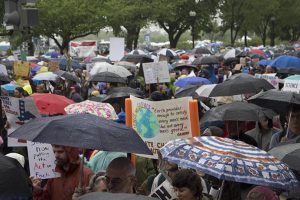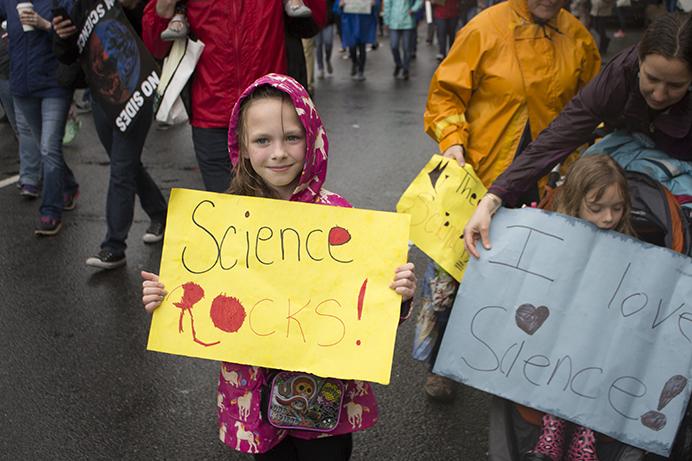By Kasra Zarei
WASHINGTON — Enthusiastic, jubilant scientists and lovers of science braved the rain to march in the nation’s capital on Earth Day. Equipped with witty signs and dressed in a variety of clothing including lab coats, goggles, and even a “Flat Earth” hat, they reminded everyone that science correctly taught people that the world is round.
This was the scene as thousands of people from around the world gathered to March for Science on April 22.
The march was one of more than 600 that took place worldwide as part of a nonpartisan movement to celebrate the importance of science and call for evidence-based policy, according to the official March for Science website.
(Editor’s note: Zarei is a DI Science writer and originally went to D.C. to participate in the march.)
The march, while nonpartisan, was still political, particularly drawing individuals who were critical of the policies embodied by President Trump’s administration.
“It seems like we are living in a different time,” said Joann Reiss, a psychologist and a resident of the D.C. area who had walked in the Women’s March on Washington in January. “I’ve worn out many pairs of shoes by participating in these marches.”
 While science is objective, marchers showed it is not entirely neutral.
While science is objective, marchers showed it is not entirely neutral.
“We are passionate about pushing science forward — we are passionate about facts and a data-driven approach to bringing the best future,” said Jeane Wong, who was from San Diego and a CEO and founder of the League of Extraordinary Scientists and Engineers.
The March for Science took place on Earth Day, and many signs focused on environmental protection, reading “Keep America Green,” “There is no Planet B,” and “The Oceans are Rising and So Are We.”
While one major focus of the march was on protecting the environment from the dangers posed by anthropogenic climate change, the mission is not at odds with the scientific community.
“Supporting the scientific community on Earth Day centers on the recognition that through rigorously peer-reviewed, replicated, and ever-refined research, scientists have shown us what human activity has done to alter the Earth’s climate and damage ecosystems,” said Peter Thorne, a University of Iowa professor and head of the UI College of Public Health’s Department of Occupational and Environmental Health, who also serves as chairman of the U.S. Environmental Protection Agency’s Science Advisory Board.
Thorne spoke with the DI prior to the march.
Beyond adopting policies that protect the environment, many marched for a plethora of scientific causes, such as providing funding for agencies that promote scientific research.
It remains to be seen how the movement carries momentum and challenges policymakers to hopefully reclaim the role of the United States as the world’s leader of evidence-based policy and scientific research.
When asked about the Trump administration’s proposed budget cut affecting the National Institutes of Health and the EPA, Sen. Chuck Grassley, R-Iowa, issued the following statement to the DI:
“The president is right to take a close look at spending. Taxpayers deserve and expect the most bang for the buck from programs at every agency. In our system of government, the president proposes and Congress disposes. Congress has the power of the purse strings. I’ve never seen a president’s budget proposal not revised substantially. As a member of the Budget Committee, I’ll carefully scrutinize and assess priorities as the president has with his proposal and, as always, work on behalf of Iowans.”
A central theme of the march in D.C. and the entire movement it is that those who recognize and value the importance of science will not be silent. Or as many chanted, “Science, not silence.”



